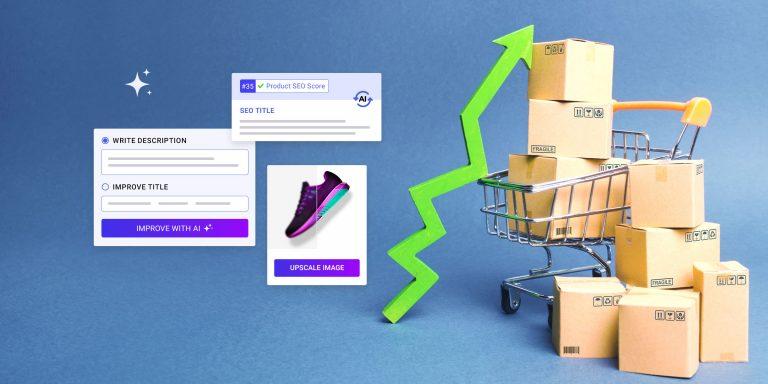Expanding your dropshipping business isn’t just about adding more products to your catalog or entering new markets on a whim. It requires strategic thinking, careful planning, and, most importantly, advanced market research. Now, you might be wondering, “Isn’t market research just for the big players?” Not at all. In fact, in the fast-paced world of dropshipping, staying ahead of trends and understanding your market is vital for your store’s growth and long-term success.
If you’re ready to take your dropshipping business to the next level, then you need to do extensive market research. But don’t worry; this doesn’t have to be an overwhelming process.
In this article, we’ll break down advanced market research techniques that are not only effective but also easy to apply. These strategies will help you identify new opportunities, understand customer needs, and stay competitive in the ever-evolving ecommerce landscape.
Table of Contents
Why advanced market research is crucial for dropshipping
Before we get into the nitty-gritty, here are a few reasons advanced market research is critical if you’re looking into growing your dropshipping businesses.
1. Identifying emerging trends and niches
The dropshipping landscape is dynamic. What’s hot today might be outdated tomorrow. By conducting in-depth market research, you can identify emerging trends and niches before they become mainstream. This proactivity will allow you to be a trendsetter rather than a follower, giving you a competitive edge.
2. Understanding customer needs and preferences
Your customers are the lifeblood of your business. Advanced market research helps you understand their evolving needs, preferences, and pain points. When you know exactly what your customers want, you can tailor your product offerings to meet those demands, enhancing customer satisfaction and loyalty.
3. Minimizing risk and making informed decisions
Entering new markets or expanding product lines comes with risks. Market research provides you with data-driven insights, reducing uncertainty and helping you make informed decisions. It allows you to test assumptions and validate ideas before committing resources, saving you time and money in the long run.
Step-by-step guide to advanced market research for dropshipping
Here’s a step-by-step guide to conducting advanced market research for dropshipping expansion.
Step 1: Analyze your current market and competitors
Before venturing into new territory, take a close look at your current market. What’s working well for your business? What products are your bestsellers, and why? Understanding your current strengths and weaknesses is the first step to identifying new opportunities.
Conduct a SWOT analysis
Perform a SWOT analysis (Strengths, Weaknesses, Opportunities, Threats) to assess your current position. This will give you a clear picture of your competitive advantage and areas where you can improve.
- Strengths: What does your business do better than competitors? Do you have a strong brand presence, a loyal customer base, or superior customer service?
- Weaknesses: Where are you lacking? Do you have limited product variety, higher prices, or slower shipping times?
- Opportunities: What new trends or markets can you tap into? Are there emerging niches or underserved customer segments?
- Threats: What external factors could negatively impact your business? Are there new competitors entering the market, or are there changing consumer behaviors?
Monitor your competitors
Keep a close eye on your competitors. Use tools like SimilarWeb, Ahrefs, or SEMrush to analyze their website traffic, keyword rankings, and backlink profiles. Look at their product offerings, pricing strategies, and customer reviews. Understanding what your competitors are doing right or wrong can provide valuable insights for your expansion strategy.
Step 2: Leverage data analytics for customer insights
Numbers don’t lie. Leverage data analytics to gain deeper insights into your customer base. Use tools like Google Analytics, Hotjar, and Shopify’s built-in analytics to gather data on customer behavior, such as:
- Which products are most viewed and purchased?
- What is the average order value?
- Where are most of your customers located?
- How do customers interact with your website (e.g., bounce rate, time on site)?
Segment your audience
Segment your audience based on demographics, purchasing behavior, and interests. This will help you understand which customer groups are most profitable and which ones may be underserved.
By targeting specific segments with tailored marketing strategies, you can improve conversion rates and customer satisfaction.

Step 3: Conduct keyword research to identify opportunities
Keyword research isn’t just for SEO, it’s a powerful tool for market research as well. Use keyword research tools like Google Keyword Planner, Semrush, and Ahref to identify trending products and customer interests. Look for keywords with high search volume but low competition, as these can indicate untapped opportunities.
Explore long-tail keywords
Don’t just focus on broad keywords. Long-tail keywords are more specific and often indicate a higher intent to purchase. For example, instead of just “men’s shoes,” look for “sustainable men’s running shoes” or “leather men’s dress shoes.” These specific terms can help you identify niche markets with less competition.
Step 4: Engage with your customers directly
Sometimes, the best insights come directly from the source. Don’t be afraid to engage with your customers and ask for their feedback. Use surveys, polls, and social media to gather qualitative data on customer preferences, pain points, and desires.
You can also check Facebook groups or Reddit communities in your niche to understand what’s missing or what people are talking about specific products or niches.
Use customer feedback tools
Tools like SurveyMonkey, Typeform, and Google Forms make it easy to create and distribute surveys. Consider offering an incentive, like a discount or a free gift, to encourage participation. The insights you gain from these surveys can be invaluable for understanding customer needs and improving your offerings.
Step 5: Utilize social listening and trend analysis
Social media isn’t just for marketing; it’s a goldmine for market research. Use social listening tools like Brandwatch, Hootsuite, and Sprout Social to monitor conversations about your brand, products, and industry. Look for trending topics, hashtags, and discussions that could indicate emerging opportunities.
Analyze social media trends
What are influencers and thought leaders in your niche talking about? What are the trending topics and hashtags? By staying on top of social media trends, you can identify new product ideas, anticipate shifts in customer preferences, and stay ahead of the competition.
Step 6: Test and validate your ideas
Once you’ve gathered data and identified potential opportunities, it’s time to put your ideas to the test. Use A/B testing and pilot programs to validate your assumptions before committing significant resources.
Run small-scale tests
Instead of launching a new product line nationwide, start with a small-scale test. Use tools like Facebook Ads Manager or Google Ads to run targeted ads and see how customers respond. Analyze the results and use the insights to refine your strategy.
Analyze and iterate
Remember, market research is not a one-time process. It’s an ongoing cycle of testing, analyzing, and iterating. Use the data from your tests to make informed decisions and continuously refine your approach. Flexibility and adaptability are key to staying ahead in the ever-evolving dropshipping landscape.
Step 7: Stay informed with industry reports and market data
To truly stay ahead of the curve, keep yourself updated with the latest industry reports and market data. Resources like Statista, Nielsen, and IBISWorld provide comprehensive market insights that can help you identify emerging trends, understand industry dynamics, and anticipate shifts in consumer behavior.
Read more: Dropshipping Stats You Need to Know
Subscribe to industry newsletters
Stay informed by subscribing to industry newsletters, joining online forums, and participating in webinars. Networking with other dropshippers and industry experts can provide fresh perspectives and new ideas that you may not have considered.
Conclusion
Advanced market research is your roadmap to dropshipping expansion. It allows you to identify new opportunities, understand customer needs, minimize risks, and make data-driven decisions. By combining these advanced techniques with a proactive, flexible mindset, you can set up your dropshipping business for steady growth and long-term success.
If you’re feeling lost and don’t know how to start, then check out our dropshipping course, where one of our most important chapters is about specific steps for market research to find a profitable niche. For example, we show you how to identify untapped niche opportunities versus oversaturated markets.











